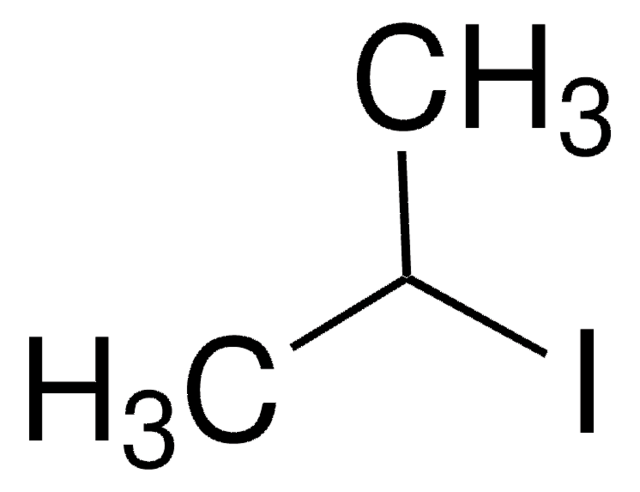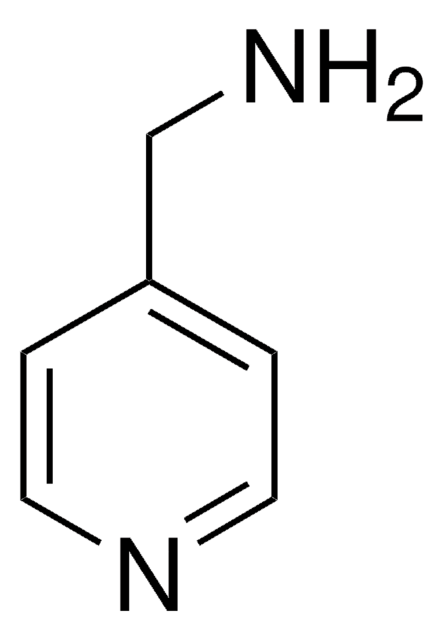248649
Hydriodic acid
contains ≤1.5% hypophosphorous acid as stabilizer, ACS reagent, ≥47.0%
Sinónimos:
Hydriotic acid
About This Item
Productos recomendados
grado
ACS reagent
Nivel de calidad
formulario
liquid
contiene
≤1.5% hypophosphorous acid as stabilizer
concentración
≥47.0%
bp
127 °C (lit.)
densidad
1.5 g/mL at 25 °C
trazas de anión
bromide, chloride (as Cl-): ≤0.05%
sulfate (SO42-): ≤0.005%
trazas de catión
Fe: ≤0.001%
heavy metals: ≤0.001%
temp. de almacenamiento
2-8°C
cadena SMILES
I
InChI
1S/HI/h1H
Clave InChI
XMBWDFGMSWQBCA-UHFFFAOYSA-N
¿Está buscando productos similares? Visita Guía de comparación de productos
Aplicación
- electrophilic hydriodination of alkenes and alkynes
- cleavage of epoxides, ethers, and acetals; conversion of alcohols to iodides
- reducing agent for many groups including quinones, α-diketones, α-ketols, α-halo ketones, α-diazo ketones, and sulfoxides
- reductive cyclization of keto acids
Hydriodic acid (hypophosphorus acid as a stabilizer) can be used for the fabrication of benzylammonium hybrid layered metal-halide perovskites for spintronic and nonlinear optical applications
Palabra de señalización
Danger
Frases de peligro
Consejos de prudencia
Clasificaciones de peligro
Aquatic Chronic 2 - Eye Dam. 1 - Met. Corr. 1 - Skin Corr. 1B
Código de clase de almacenamiento
8B - Non-combustible corrosive hazardous materials
Clase de riesgo para el agua (WGK)
WGK 1
Punto de inflamabilidad (°F)
Not applicable
Punto de inflamabilidad (°C)
Not applicable
Certificados de análisis (COA)
Busque Certificados de análisis (COA) introduciendo el número de lote del producto. Los números de lote se encuentran en la etiqueta del producto después de las palabras «Lot» o «Batch»
¿Ya tiene este producto?
Encuentre la documentación para los productos que ha comprado recientemente en la Biblioteca de documentos.
Los clientes también vieron
Nuestro equipo de científicos tiene experiencia en todas las áreas de investigación: Ciencias de la vida, Ciencia de los materiales, Síntesis química, Cromatografía, Analítica y muchas otras.
Póngase en contacto con el Servicio técnico











